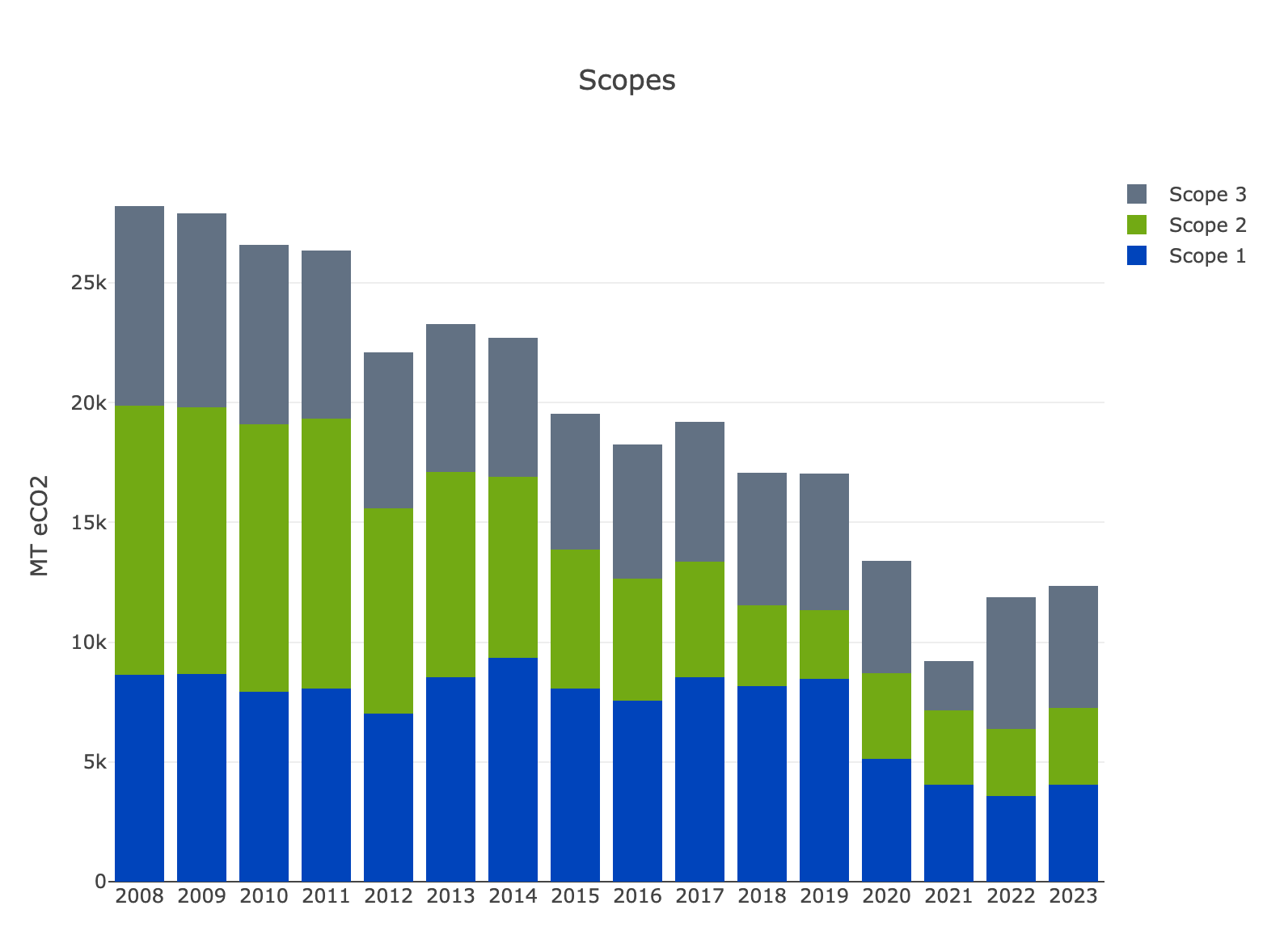Carleton signed on the American College and Universities Presidents Climate Commitment (ACUPCC, now Second Nature) in 2007. This pledge called on Carleton to set a carbon reduction goal and create a climate action plan. At that time Carleton’s goal was set to become carbon free by 2050. Now we are well ahead of goals and developing plans to accelerate carbon neutrality well before this deadline.
The Sustainability Office uses a baseline of 2008 from which we measure our annual carbon emissions data in fiscal years, FY, (July 1 to June 30). Our emissions are measured in metric tons of carbon dioxide equivalents (MTCDE) and divided into three “scopes.”
Scope 1: Emissions burned on-site and used on-site. The most common forms of this are natural gas for heating campus and fuel in our fleet vehicles.
Scope 2: Emissions burned off-site and used on-site. Purchased electricity is the main source of emissions in this category.
Scope 3: Emissions burned off-site and used off-site. The categories in order of greatest impact include air travel (>65%), staff and faculty commuting (>20%), and solid waste, wastewater, and paper use are minor contributors. The emissions from these areas weren’t produced on campus, but Carleton claims them as our campus operation would not flourish without these things.
Explore our emissions data in more detail.
Campus Emissions FY08 to FY23

Carleton has reduced its emissions by 58% since the year 2008. Scope three emissions rose slightly between 2021 and 2023 when air travel resumed.
With the completion of the geothermal system the Utility Master Plan has been realized.